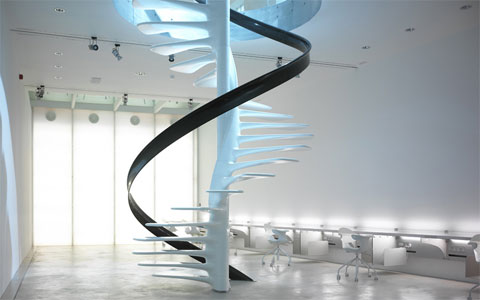If you happen to live in a two-story or multi-level home, and your laundry room is located in the basement or on the first floor, you'd probably welcome a trendy upstairs laundry room, or would you? This latest interior design trend, some say, is here to stay, whereas when we listen to others who complain about having their laundry rooms upstairs, we're left to wonder if the trend will last.
Let's look at the pros and cons of having a laundry room on the same floor as the bedrooms, and then we'll explore the design considerations if you would like to have your laundry room upstairs.
Everyone knows that if you lug heavy laundry baskets upstairs and downstairs, on a continual basis, week after week, you begin to wonder if you just shouldn't convert that spare bedroom upstairs that no one uses into a laundry room. Is it possible? yes. But is it practical? If you later decide to sell your home, will it be a deal breaker or a deal enhancer to have the laundry room upstairs?
After talking to several groups of people who redesigned their homes to include a posh laundry room upstairs, I discovered that those who were in favor of it didn't mind trekking up and down the stairs to put clothes into the washer and then remove clothes from the dryer. Thus, they didn't mind the stair-climbing exercise, but they most often said they appreciated being able to quickly hang their clothes when they came out of the dryer and then they could walk only a short distance to hang everything up in nearby closets. The same convenience was true of having a folding table upstairs, and having the privilege of putting clothes into drawers or armories that were in close proximity to the laundry room.
Another advantage of having the laundry room upstairs is that you can toss in a quick load of clothes before you head to work, or better still, you can toss that wrinkled shirt or blouse into the dryer while you're taking your shower and by the time you're ready to get dressed, all the wrinkles are gone and you didn't have to walk more than a few feet to get it done. That time-saving bonus was valued by many of the people I spoke with.
If you're contemplating converting a spare bedroom into a trendy bathroom with all the amenities, you might think that one of the biggest challenges would be to get the plumbing installed, but that's an easy solution for most interior designers who understand and have had experience with such a conversion. The short answer is that a strip can be installed in the wall that will house the pipes that come up from the ground floor.
When you ask an interior designer for his recommendations for appliances, he will most likely tell you his preference, but then he will tell you about the differences between American made and European made laundry equipment. Most American-manufactured washers are top loading, which makes the openings larger and allows for bigger loads of laundry to be washed. The down side is that American washers have a tendency to use more water than their European counterparts.
Most European front-loading machines conserve more water, and their spin cycles are faster, but the machines are much noisier than American-made machines. A definite disadvantage with European front-loading washers is that if you want to add an extra piece of clothing or two, you can't open the door in the middle of a wash cycle, or all the water would spill onto the floor and carpeting in the upstairs location. Likewise, if for some reason the washing machine were to break, you would have to drain the laundry tub inside the washer with a hose.

0 comments:
Post a Comment